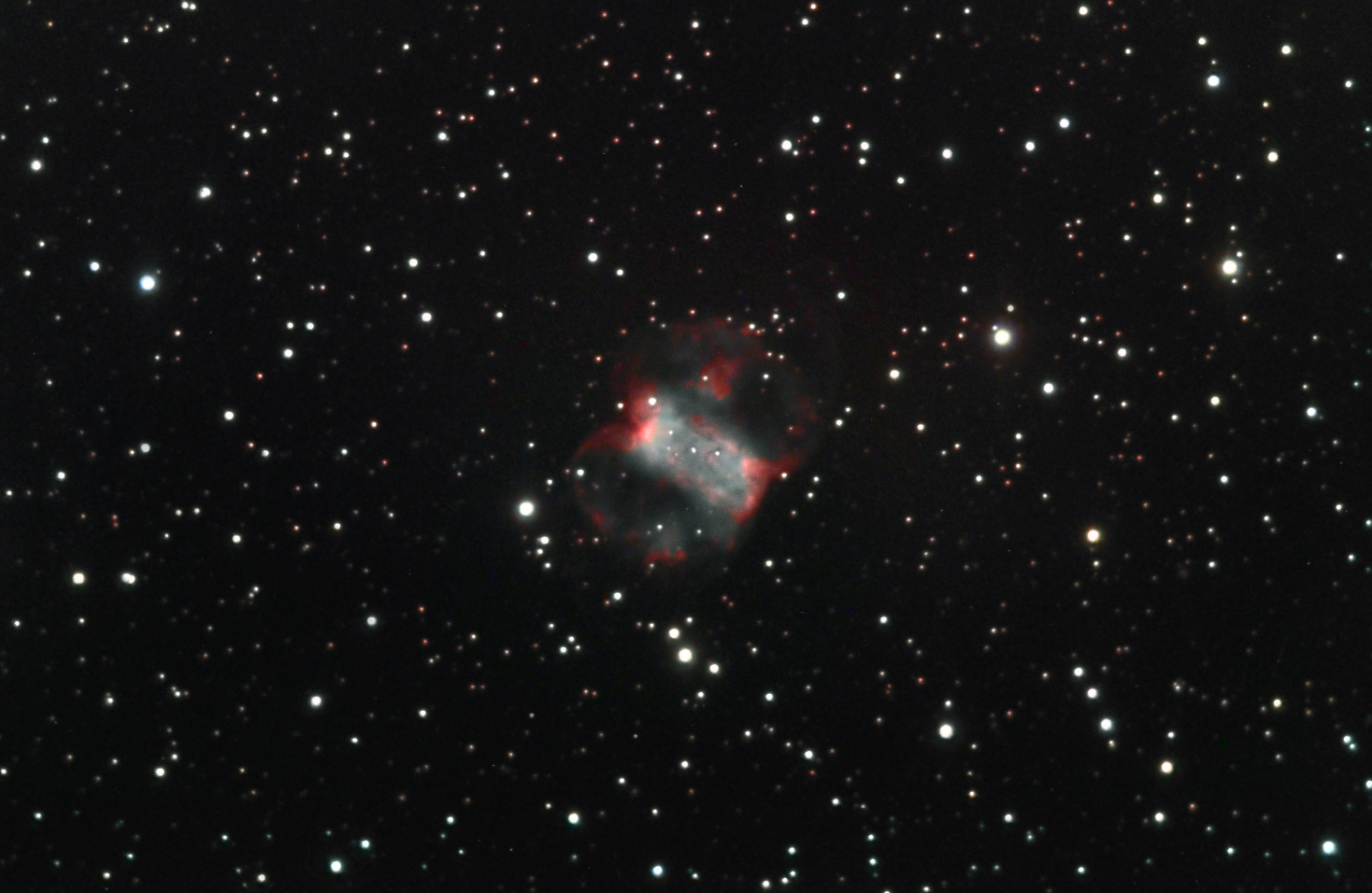

M27: M76, also known as the Little Dumbbell Nebula because of its vague resemblance to the much larger M27 (the Dumbbell Nebula), is a planetary nebula, the type of nebula which it is generally thought our Sun will produce as nuclear fusion slows and then dies in its core, and it expels its outer layers of gas. Unlike M27, most of M76 is quite dim, which presents a challenge both in taking the image and in processing it. M76 appears about 4 arcminutes across (including the faint parts). Its distance from Earth is not known with any precision, with estimates ranging from 1,000 to 15,000 light years; 3,400 light years is perhaps the most common estimate.
Copyright Mark de Regt, 2002